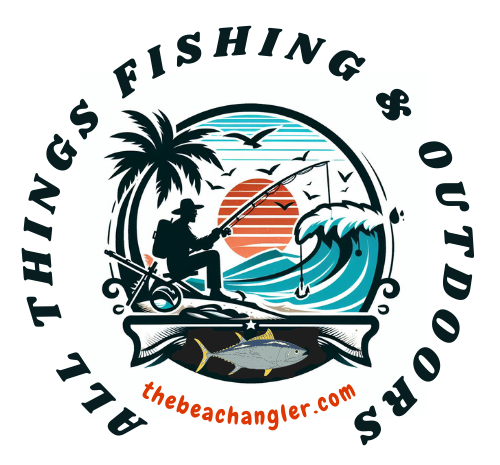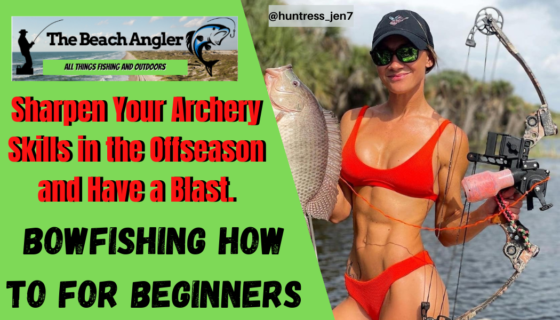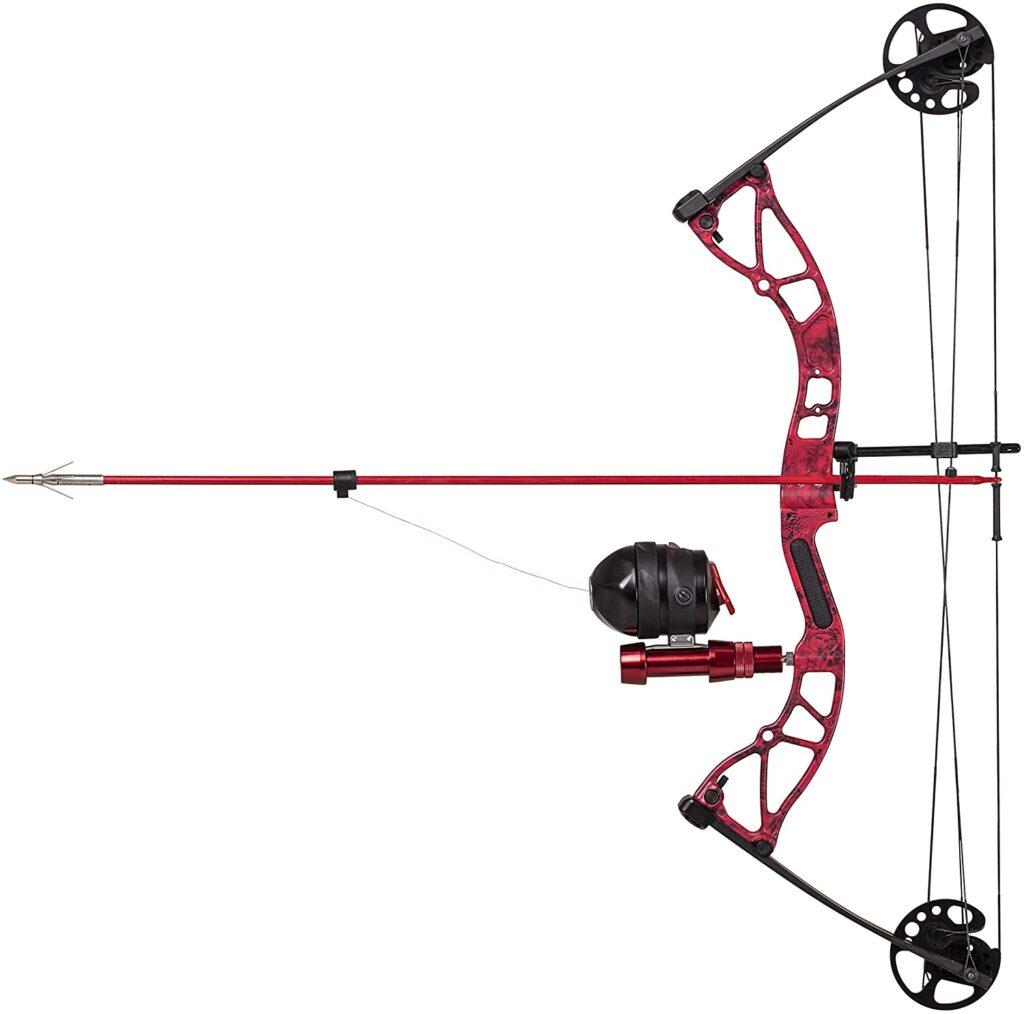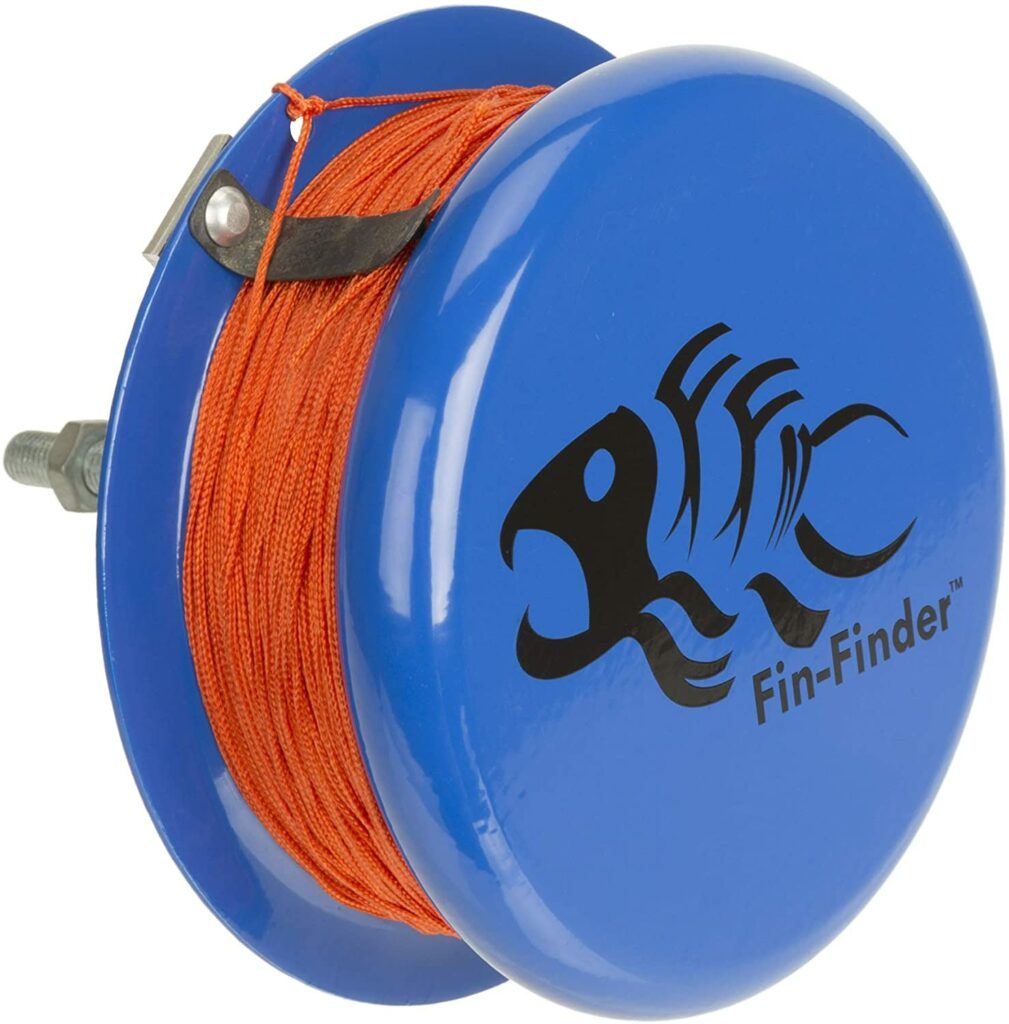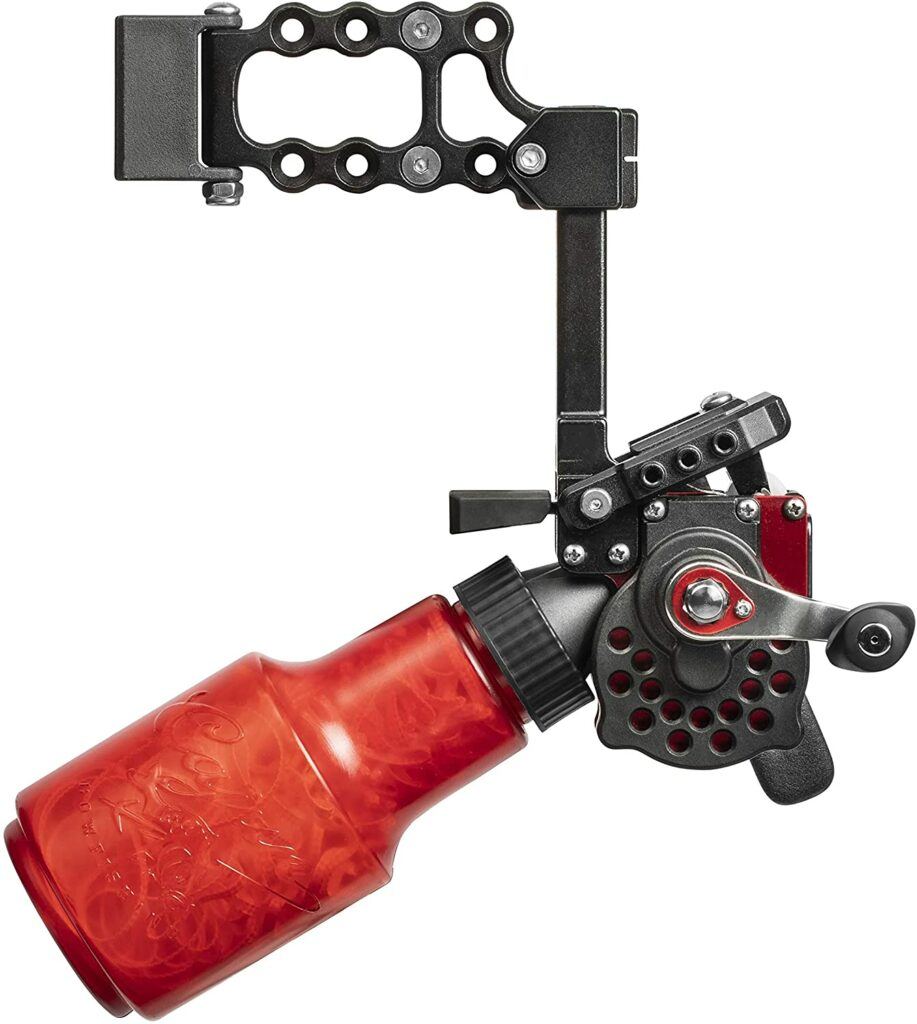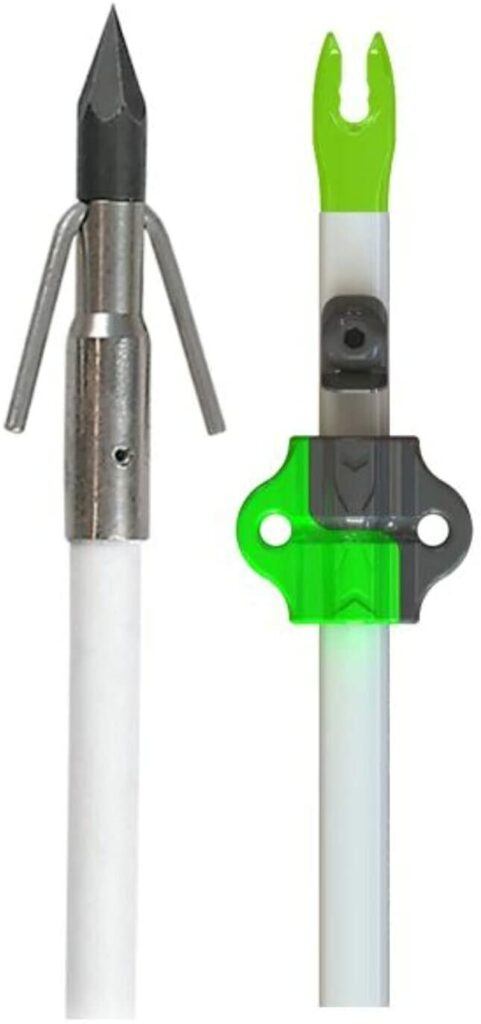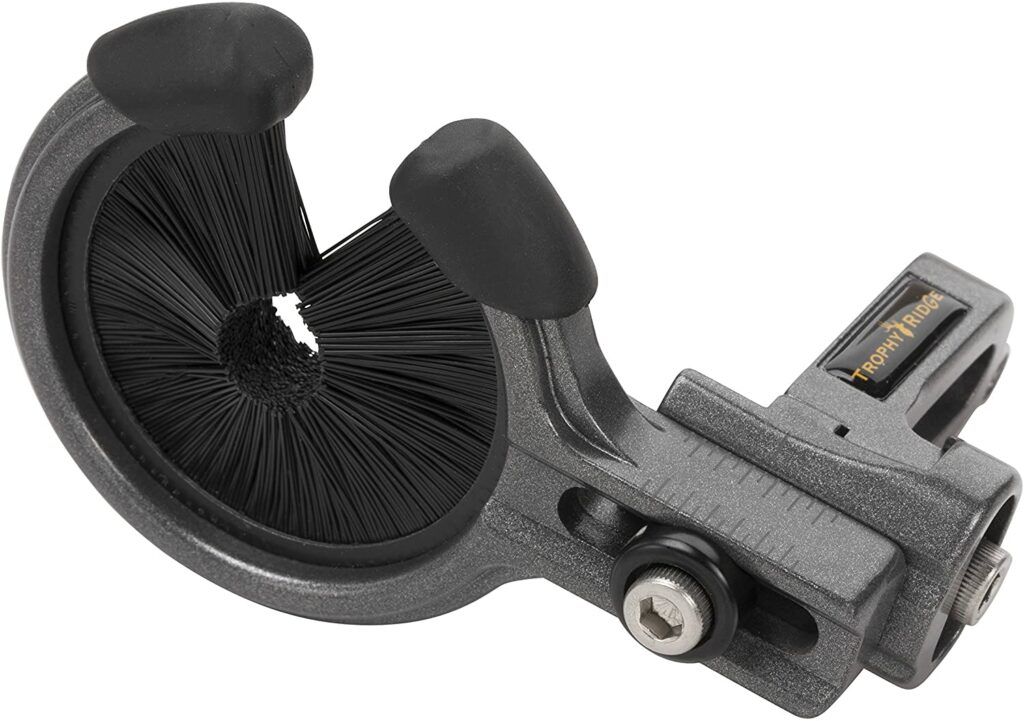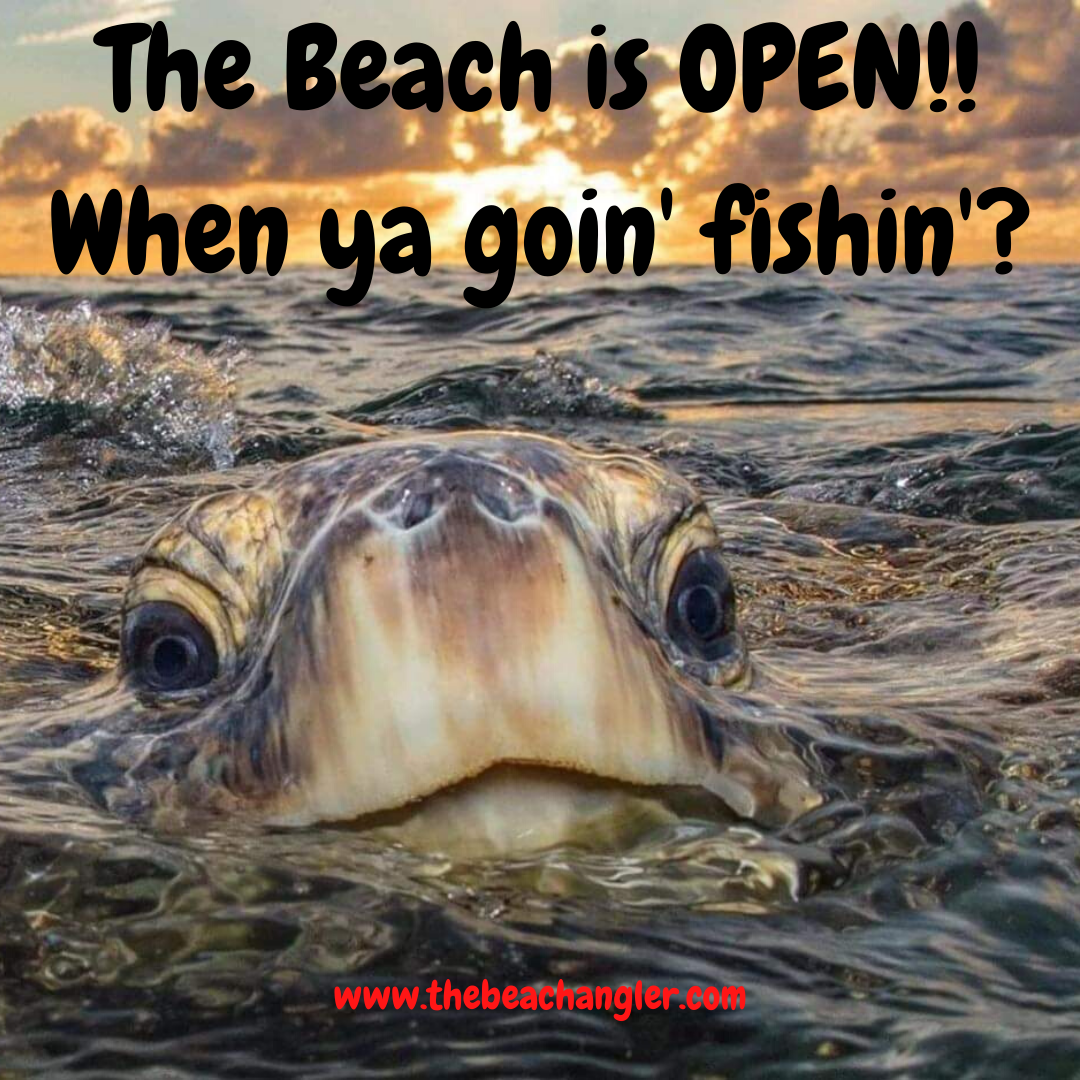Last updated on May 3rd, 2024 at 03:18 pm
Do you love to hunt and fish? If so, I have some good news. The sport of bowfishing combines both hunting and fishing at the same time. You can sharpen your archery skills and have a great time on the water hunting fish. I mean, how cool is that? When archery season is over, you don’t have to put away your bow, just rig it up for bow fishing and try you hand at bowfishing.
I don’t know about you, but for me, any excuse to get outdoors is good. And, the rapidly growing sport of bowfishing allows me to sharpen my archery skills in the “off-season” making me a better shot with my bow. This translates into better success on my archery hunting adventures. Some of you may already be familiar with the sport of bowfishing, but if not, let’s take a look at exactly what is bowfishing.
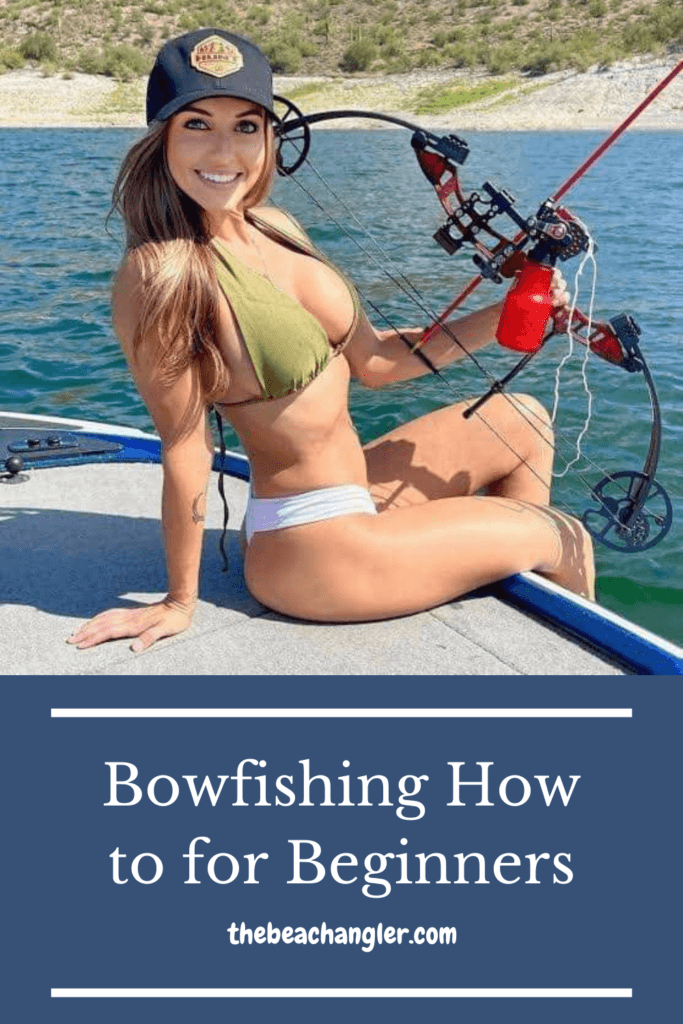
BOWFISHING AT A GLANCE:
Bowfishing is a growing and exciting sport. It will allow you to sharpen your archery skills and enjoy more time outdoors. And, it is a fairly easy and inexpensive sport to take up. The 5 essentials of bowfishing for beginners are 1 The body of water ( river, stream, lake, or ocean) you plan on fishing. 2. A bow you are comfortable shooting. 3. A bowfishing reel and line. 4. A bowfishing arrow with a barbed fishing point. 5. The most important point of all – Practice, Practice and more Practice.
What is Bowfishing?
Can you really fish with a bow and arrow? Yes absolutely, bowfishing is a sport where you fish, or hunt fish, with a bow and arrow. You are shooting fish with a special barbed arrow instead of luring them with bait and hook.
Now bowfishing may be a rather new sport to us, but it dates back more than 15,000 years when our ancestors learned to make bows and arrows for hunting food. They soon realized that they could not only hunt animals on land, but that the same tools could be used for fishing.
OK, so Is bowfishing hunting or fishing? Well, it isn’t exactly fishing, but it isn’t exactly bow hunting either. The cool thing about the sport is you get to experience both fishing and bow hunting on the same adventure. Bowfishing is becoming a popular sport that continues to grow. There are new bowfishing publications, associations and even tournaments. And, bowfishing is often promoted as a means of controlling invasive species in our waterways.
Is there a season for bowfishing?
While generally there is no special “bowfishing season”, Late spring and summer are typically the best times for bowfishing. As spring waters warm, “rough fish,” such as carp, gar, buffalo, burbot, pike, and suckers, begin to move into the shallows of lakes and river backwaters to spawn.
Fall can be good for bowfishing as well. The temperatures cool off and there are usually less fishermen on the water to compete with.
Typically, bowfishing is best during early morning, or at dusk, because this is when fish are the most active. The best conditions are when the waters are calm, and clear.
You need visibility to see the fish. The cool thing about the sport is you can bowfish at night as well. Nighttime bow fishing is very popular, particularly in the heat of summer, as temperatures cool and winds tend to calm after dark.
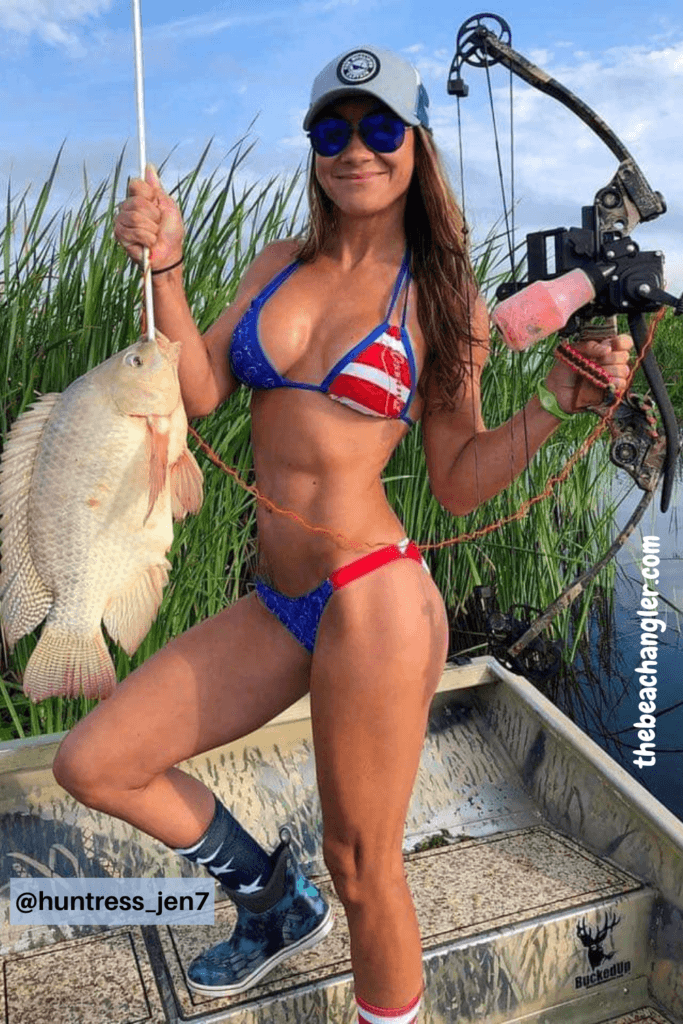
Bowfishing at night uses specially equipped boats with down facing lights and raised shooting platforms. The lights illuminate the water, and the raised platform gives you a great vantage point to spot the fish and take your shots. The nighttime action can be fast and furious when the conditions are right.
Now you can try Bowfishing on nearly anybody of water, as long as it is shallow and or has good visibility (relatively clear water). Anything from lakes to rivers and streams, pretty much in any type of freshwater is great for bowfishing. But what about saltwater? Guess what, you can bowfish there too. From shallow flats, estuaries and bays, to the beach front you can find plenty of opportunities to bowfish in saltwater.
How to Learn Bowfishing?

If you are interested in learning the sport of bowfishing, The Archery Trade Association has a very good online course that will get you up to speed and get you comfortable with the sport, equipment, and terminology. The video below is another good introduction to the sport and will give you a good handle on the basics.
Now, bowfishing shots are typically much closer than your average bow hunting shot. This makes it much easier for beginners to get into the sport as there is no need for long range shooting skills. And, the shorter range shots of bowfishing eliminate the need for fancy sights and other specialized hunting gear.
Now, that doesn’t mean bowfishing is easy. It has it is own set of challenges. For one, your target is moving and underwater. This will make aiming at and leading your target difficult. But hey, if it was easy it wouldn’t be as much fun. Like anything else, if you want to be successful, there is but one formula: Practice, Practice, Practice!
How do you practice bowfishing?
To practice for bowfishing, you need to concentrate on basically two things and both have to do with aiming. You will be shooting at a moving target that is also underwater. As if a moving target wasn’t enough, being underwater distorts your view of the fish. I won’t bore you with the physics involved, but in short, the fish will look farther away than it really is.
Therefore, the tendency is for beginners to shoot over the fish. You will have to program yourself to aim low. The deeper the fish is, the lower you need to aim to hit your target. A good rule is to aim 3 inches lower for every foot of depth and for beginners it is often recommended to aim 6 inches below where you think you need to aim then adjust from there as you get more practice and experience.
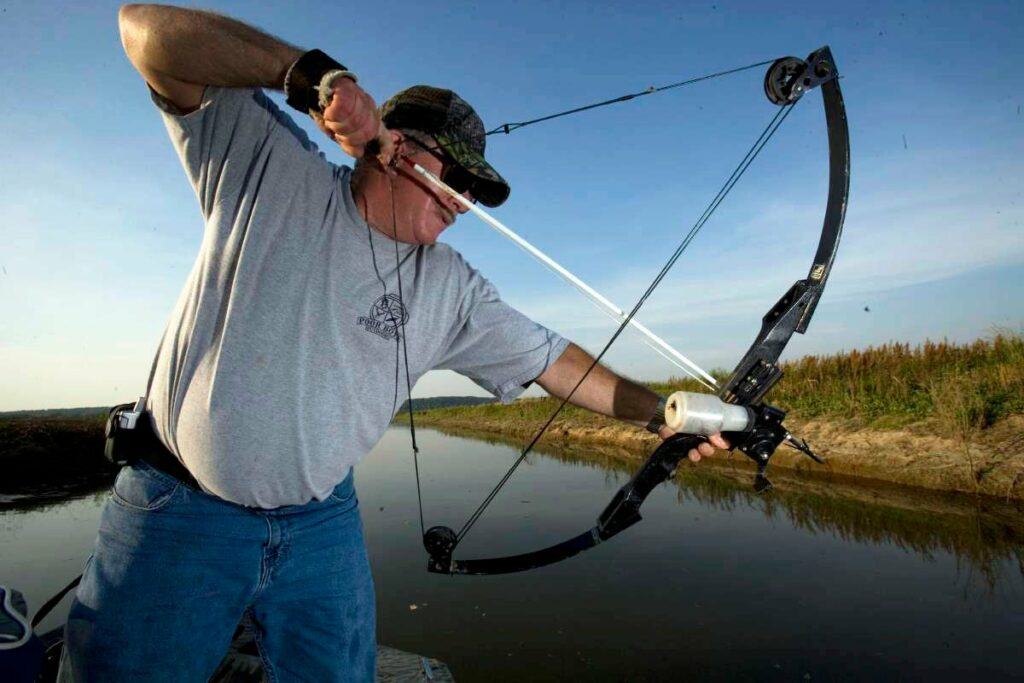
You will also need to practice aiming and shooting at a moving target. It is a challenge, but it is also a ton of fun. You won’t have time for fancy sites, you need to practice instinctive or snap shooting. And, that will only come with lots and lots of practice. Now I hesitate to suggest this, but find yourself a shallow (2ft or less) clear body of water with a soft bottom then take some plastic bottles and fill them with water so they will sink to the bottom.
Place them at random distances and depths from your shooting position. Practice with your bowfishing gear aiming and shooting at those sunken targets until you get comfortable aiming low and snap shooting. Then, Please, Please, retrieve your targets and dispose of properly. There is enough trash in the water already. Of course, you could just try shooting at a spot on the bottom and not have to deal with disposing of your targets.
Another area to consider when learning and practicing bowfishing is that bowfishing is a close range sport and often done in shallow waters. You will need to practice STEALTH. Fish in shallow water are spooked easily. You need to be able to slip up on your target as quietly and with as little disturbance as possible. Particularly when wading or bowfishing from shore.
When looking for likely areas to bowfish, you need to spend some time in the area and check for signs of fish, such as water splashing, ripples, nervous bait fish, or V-shaped wakes produced from swimming fish.
Bowfishing Gear
The next logical question is: What do I need for bowfishing? The good news is, you don’t need a lot of expensive gear to get into bowfishing. You will need a bow, some kind of reel with line, arrows with barbed tips, and a fishing license. It’s considered fishing so you won’t need a hunting license. If you have any doubts, contact your local game and fish department before you go.
Bowfishing Bows
Getting into bowfishing isn’t difficult. You can find complete bowfishing kits with bow, reel and arrows for less than $200, you can check garage sales and pick up a good used bow and add a bowfishing reel and arrows and be set up for much less. Once you’ve spent some time on the water and tried your hand at bowfishing, then you can decide if you want to invest in a more expensive top of the line bowfishing setup.
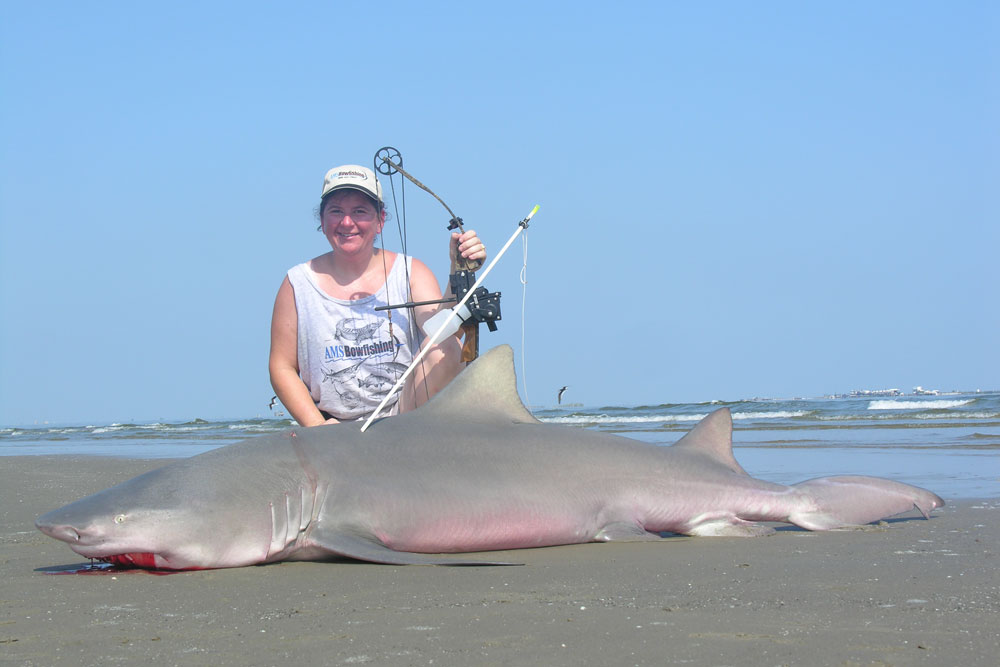
You can use any type of bow for bowfishing, compound, recurve or even a longbow can be converted into a bowfishing bow. You will just need to modify it with the proper bowfishing accessories. Many bowfishers purchase used hunting bows and convert them to bowfishing. Some just switch out there current hunting setup for bowfishing once archery season is over.
A recurve bow is the most affordable option. You can find used recurve bows at garage sales and thrift stores at near give away prices. However, when buying a recurve bow, make sure you can mount your bowfishing accessories to it. The bow will need to have a stabilizer bushing or sight-mount holes you can use to mount a bowfishing reel, some older recurves may not have these.
Compound bows are the most popular choice for bowfishing mainly because it is what most people hunt with. But, all of those sights and hunting releases will be of no use to you when bowfishing. You will be instinctive or snap shooting and won’t have time to use a sight or release, so put them away until archery season.
The typical draw weight for most bowfishing situations is around 30-40 pounds, but whatever you can shoot well and comfortably is the most important factor. Even youth bows can be converted to bowfishing bows and most young shooters can’t handle a 40 pound draw weight. Whatever your setup, Practice, Practice, Practice.
Converting Your Hunting Bow to a Bowfishing Bow
- Step 1: Strip Down Your Hunting Bow – get rid of sights, quivers etc.
- Step 2: Add Your Bowfishing Reel.
- Step 3: Add an Arrow Rest Made for Bowfishing Arrows. …
- Step 4: Mount a Light to Your Bow. – optional
- Step 5: Practice, Practice, Practice.
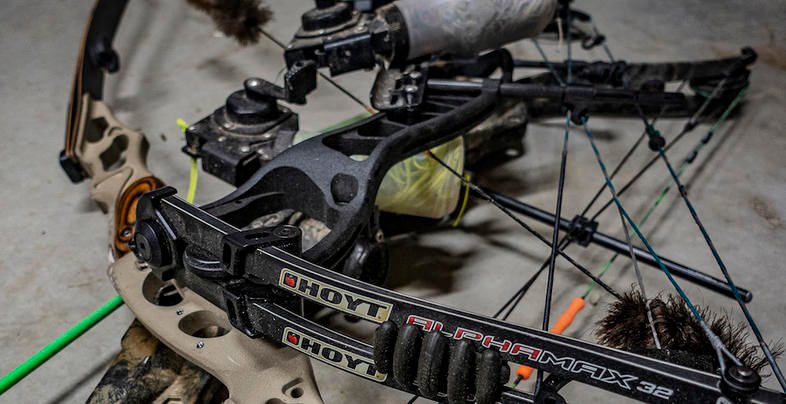
Bowfishing Reels
The most important accessory for bowfishing is the reel. There are three types of bowfishing reels, and each one has it is own advantages and disadvantages. The reel types are: the hand reel, the bottle reel, and the spincast reel.
Hand Reel
The original bowfishing reel is the hand reel and it is still the preferred reel of the traditionalist bowfishers.
It is the simplest to use and is nothing more than a spool of line attached to the bow with a mounting bracket. After the shot, you simply wind the line back on the spool by hand.
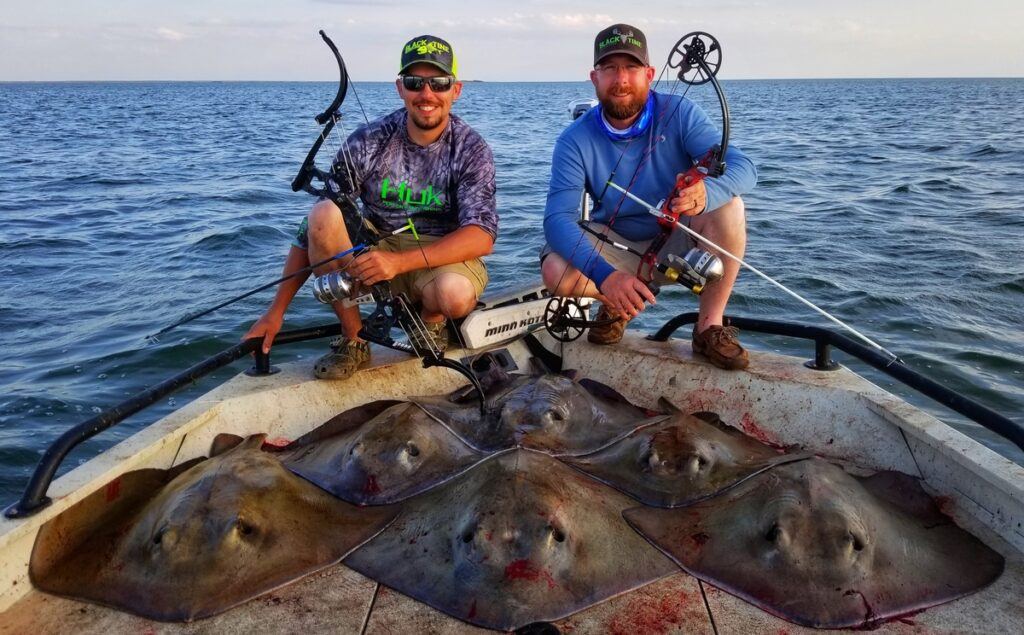
The hand reel is very simple to use, and better yet, there’s literally nothing about it that can break down. It’s by far the most affordable type of bowfishing reel and it works well with recurve bows. But there are some disadvantages to the hand reel. It takes a heavier line and more “hands-on” work than the other types of reels. You will need to wear gloves because if you are fighting a fish and it makes a run, bowfishing line can burn your hands.
The bottle reel is the most popular and commonly used bowfishing reel. They are reliable, and a lot easier on the operator than hand reels. They consist of a bottle to house your line and a handle, just like on any other fishing reel, to retrieve your line, arrow and fish hopefully. Like the hand reel, they use heavier lines but you won’t have to worry about hand retrieval. The friction of the line coming out of the bottle can make longer shots more difficult however.
Spincast Reel
Spincast bowfishing reels are essentially a regular fishing reel mounted on a bow. And, for most fisherman, they are the most natural to use for them. Spincast reels retrieve your line faster and, because they use thinner line, make longer shots easier and more accurately. On the downside, they are the most expensive option, and there are many more moving parts to keep clean and possibly break down.
Bowfishing Arrows
Now, while you can convert nearly any bow for bowfishing, you can’t just use any old arrow. Using standard hunting or archery arrows is not a good option. The fletching on these arrows will cause erratic changes in direction under water making accurate shots nearly impossible. Bowfishing arrows must be dense enough to travel through water, so they’re made from heavier materials, and are made without fletching (the vanes or feathers at the end of archery arrows).
Bowfishing arrows have specific features that let you shoot and retrieve fish from the water, including the specialized barbed arrow tips, the ability to attach them to the fishing line. They are considerably heavier and stronger than arrows used in other types of archery because they need to travel through water.
There are three types of bowfishing arrow shaft materials: fiberglass, carbon, and hybrid. All are built heavy and sturdy enough to keep enough power underwater and still penetrate fish. But, if you’re after larger fish, carbon arrows will be your best option. Carbon bowfishing arrows will come at a much higher price however.
Bowfishing arrows all come with barbed tips, when it comes to choosing the arrow point, it’s all about the type of fish you’re targeting. The barbs are there to make sure that the arrow stays in the fish while you’re fighting and landing the fish. There are some differences in points.
For bigger thicker bodied fish, like Carp, you need an arrow point that will set it is barbs even if you don’t get a complete pass through of your arrow. If you are targeting hard scaled or tough skinned fish (like sharks or rays), you’ll need a sharper point, to get good penetration.
Arrow Rest
The arrow rest is a stabilizer which keeps your arrow still and in place as you’re taking your shot. A proper rest will prevent your arrow from moving when you draw the bow until it’s released. And, because with bowfishing you are making snap shots from many angles with lots of moving around, a good bowfishing arrow rest will be very important making accurate shots. In addition, since bowfishing arrows are much heavier than traditional arrows, your arrow rest will need to be durable enough to handle both the weight of the arrow and a high number of shots that you typically take when bowfishing.
Bowfishing from a Boat
Do you need a boat to bowfish? No, you can bowfish from the shore, from the dock or pier or by wading. But, bowfishing from a boat will allow you to cover much more water and, when rigged with lights, allow you to bowfish at night. Any boat that will provide a stable shooting platform, and that you are comfortable shooting from, can be used for bowfishing.
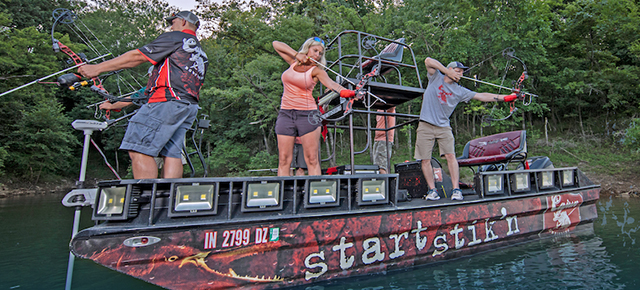
Some of the more avid bowfisherman have designed boats specifically for bowfishing. They will typically be rigged with lights for night fishing and have a shooting platform that will allow one or more bowfisherman to shoot from. Everything from flat bottom Jon boats to fancy high-powered air boats can be modified for bowfishing.
You can charter a bowfishing guide in many areas of the country and experience bowfishing at night from a boat. Online apps like fishingbooker.com will help you setup a bowfishing adventure perfect for you. Depending on group size, bowfishing charters range from about $300 – $350 per person.
Bowfishing Safety
As with any kind of fishing or outdoor activity, please practice “safety first”. When Bowfishing, shots can happen quickly. You can find yourself in a situation where you are shooting, reeling and shooting again in rapid fire succession.
It can be easy to lose track of what’s going on and where everyone is. Just like any other shooting sport, be sure of your target and be aware of what else is around you.
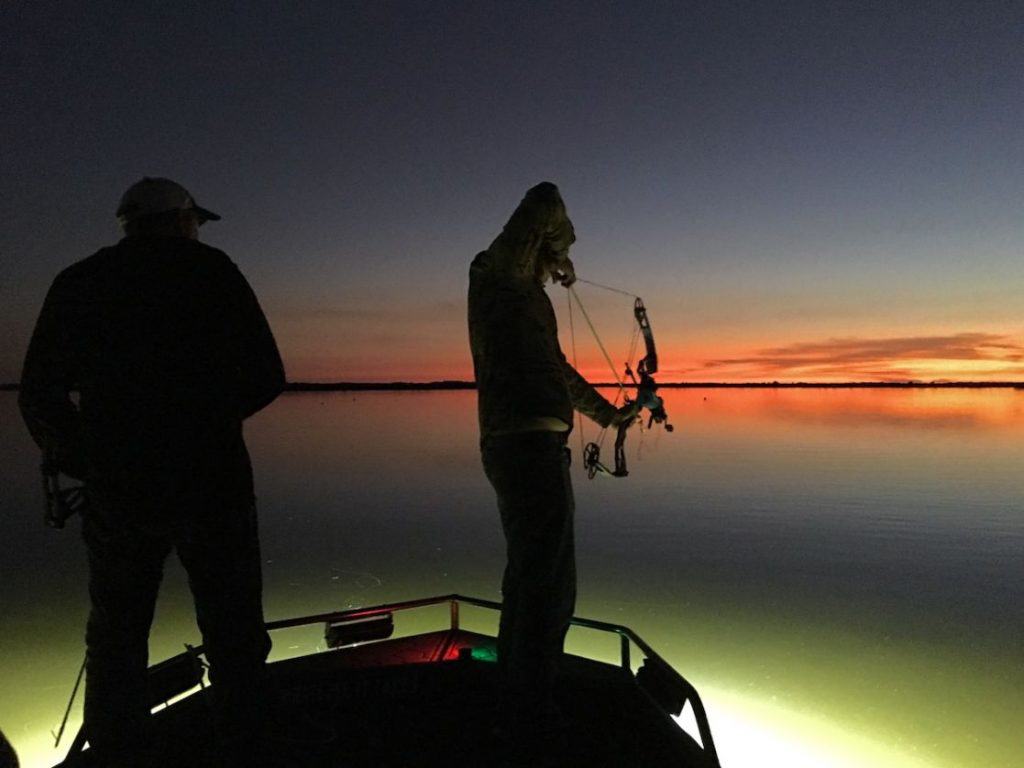
With arrows and lines flying and fish flopping on the deck, someone could get hurt. Pay attention, and try to be aware of your surroundings, especially when bowfishing with others at night. Bowfishing is exciting and a lot of fun, don’t spoil it by being careless. There will be more fish, don’t take a risky shot and end up in the emergency room.
What can you Bowfish for?
Now, bowfishing is legal in almost every state for non-gamefish species such as gar, buffalo, mullet and sheepshead. A bow may be used to take any species of fish that is: NOT listed as a game fish and, NOT listed as an endangered or threatened species. There are a few states also allow bowfishing for game fish and you will need to check with the local Game and Fish offices to get the current regulations for the area you want to bowfish. Each state has it is own fish and game laws be responsible and make sure you are legal for the state where you are bowfishing.
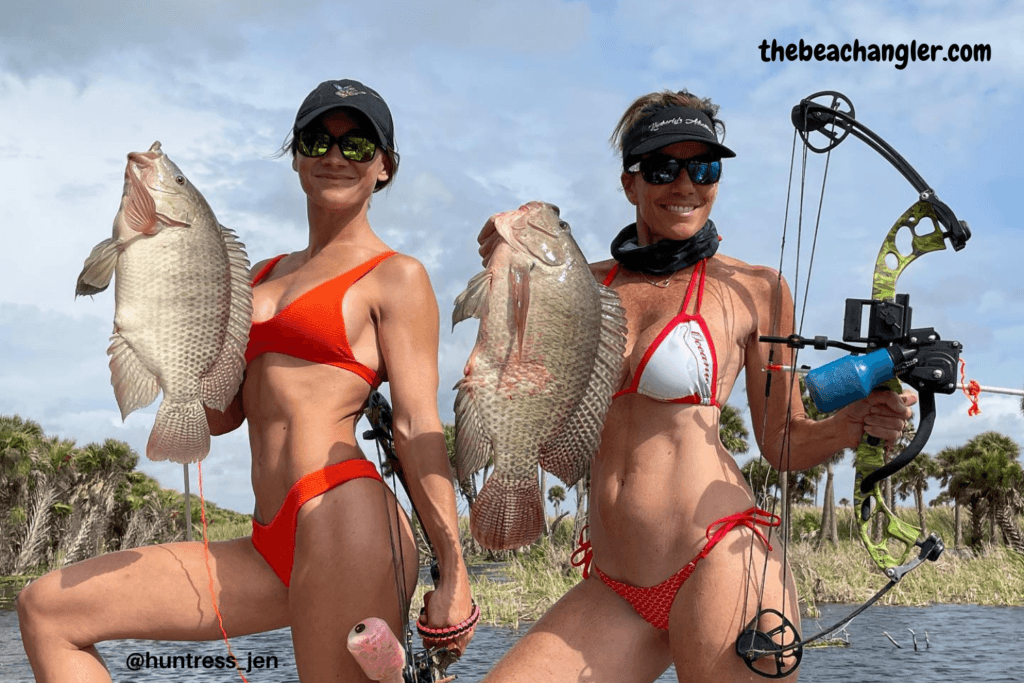
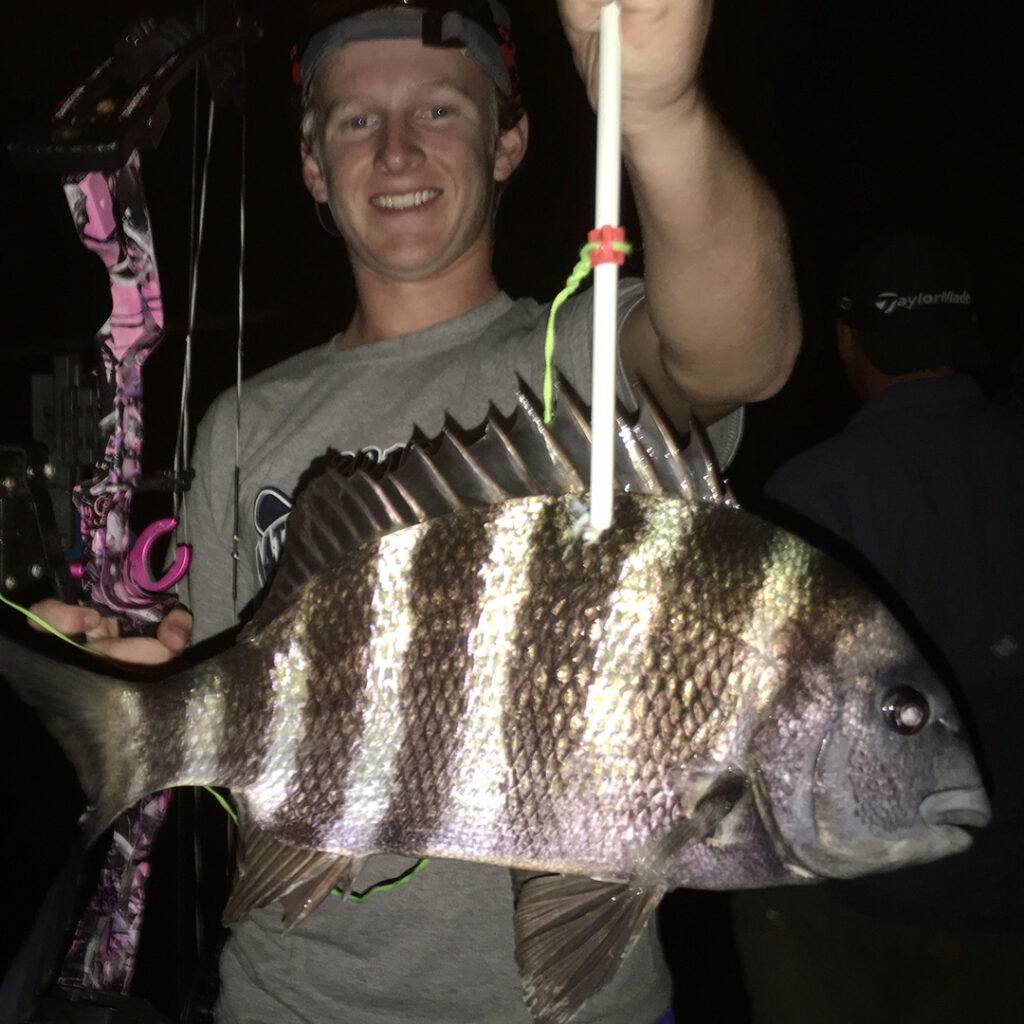
Bowfishing is most popular in Indiana, Louisiana, Texas, Ohio and Florida. In Texas, you can bowfish for rays and sheepshead in saltwater. We use rays for shark baits when we set up on the beach, and some people claim they are good to eat.
Sheepshead, are hard fighters, plentiful and great table fare. In freshwater, in addition to gar, carp and buffalo, tilapia can be taken with bowfishing gear. And, as most of you know, they are a good eating fish as well. Also, gar can be good to eat if you are willing to take the time to skin and clean them.
The other species like carp and buffalo are not known as great table fare, but some do eat them and they can be made into pet food or fertilizer for your garden. In many areas, bowfishing is an effective control for some of these invasive and non game species. Once you shoot them, they must be removed from the water. Check with your local game and fish department for a list of fish that you can legally take with bowfishing equipment.
Frequently Asked Questions about Bowfishing
1. What is bowfishing?
Bowfishing is a method of fishing that involves using a specialized bow and arrow to shoot fish in freshwater or saltwater environments. It’s a combination of archery and fishing.
2. What equipment do I need for bowfishing?
You will need a bowfishing bow, bowfishing arrows with specialized tips, a reel or spool to retrieve your line, a fishing line, and polarized sunglasses to see into the water.
3. Do I need a special bow for bowfishing, or can I use my regular bow?
It’s recommended to use a dedicated bowfishing bow, as they are designed for the sport and can handle the unique stresses associated with shooting arrows into the water.
4. Where can I go bowfishing?
You can go bowfishing in freshwater lakes, rivers, ponds, and saltwater environments. Make sure to check local regulations and obtain any necessary permits before bowfishing.
5. What kinds of fish can I target with bowfishing?
Bowfishers typically target species like carp, gar, catfish, buffalo, and other invasive or non-game fish. Always check local regulations regarding target species.

6. Is bowfishing legal in my area?
Bowfishing regulations vary by location, so it’s essential to check with your local wildlife agency or fisheries department to determine the legality and specific rules in your area.
7. How do I aim underwater when bowfishing?
When bowfishing, you need to compensate for the refraction of light in the water. Aim lower than the fish, typically around a foot or more, depending on the depth and angle.
8. What is the best time of day for bowfishing?
Bowfishing is often most productive during the nighttime or in low-light conditions, such as dawn and dusk, when fish are closer to the surface.
9. Do I need a fishing license for bowfishing?
Yes, in most places, you will need a fishing license to engage in bowfishing. The specific requirements and fees can vary by location.
10. What are the benefits of bowfishing?
Bowfishing can be a fun and challenging way to remove invasive or undesirable fish species from aquatic ecosystems, which can help protect native species and improve overall ecosystem health.
11. How do I retrieve fish after shooting them with an arrow?
Once you’ve shot a fish, use the reel or spool on your bow to retrieve the line carefully. Be prepared to handline the fish if needed.
12. Can I eat the fish I catch while bowfishing?
Some species targeted in bowfishing are edible, like carp and catfish. However, check local advisories and regulations regarding the consumption of fish caught in your area, as some may be less suitable for eating.
Remember that bowfishing rules and regulations can vary widely by location, so always consult local authorities and guidelines to ensure you’re following the law and protecting the environment while enjoying this unique sport.
Bowfishing: It’s Both Hunting and Fishing
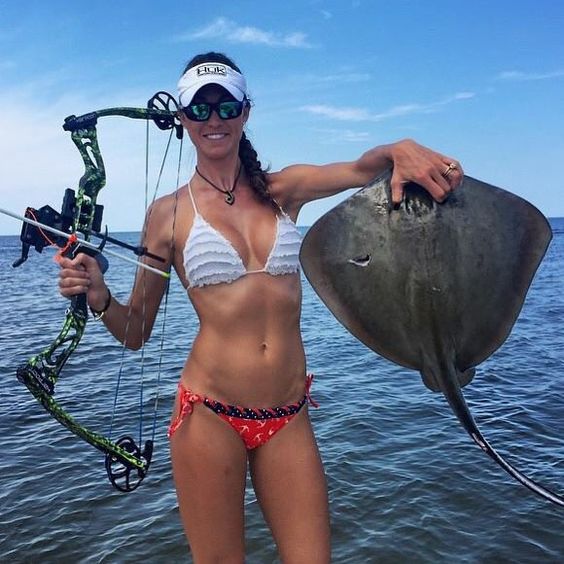
If you haven’t tried bowfishing, you really should consider taking it up. If you are a bow hunter, it will help sharpen your skills and make you a better hunter. If you are new to archery, bowfishing is a great place to start.
You will have much more action and opportunity to practice your skills than sitting in a tree stand all day hoping something comes by. Besides all that, it really is a blast.
Freshwater, saltwater, lakes, rivers or streams, somewhere near you is a body of water you can try your luck bowfishing. Give it a shot and let me know how it goes.
As always, stay safe, enjoy the journey and please try to leave it cleaner than you found it. If you have any comments, questions, ideas or suggestions please leave them in the comment section below and I’ll get back to you asap. You can follow us on Facebook: Rex The Beach Angler, Instagram: thebeachangler7, Twitter: @AnglerBeach, and YouTube: Man Art Creations.
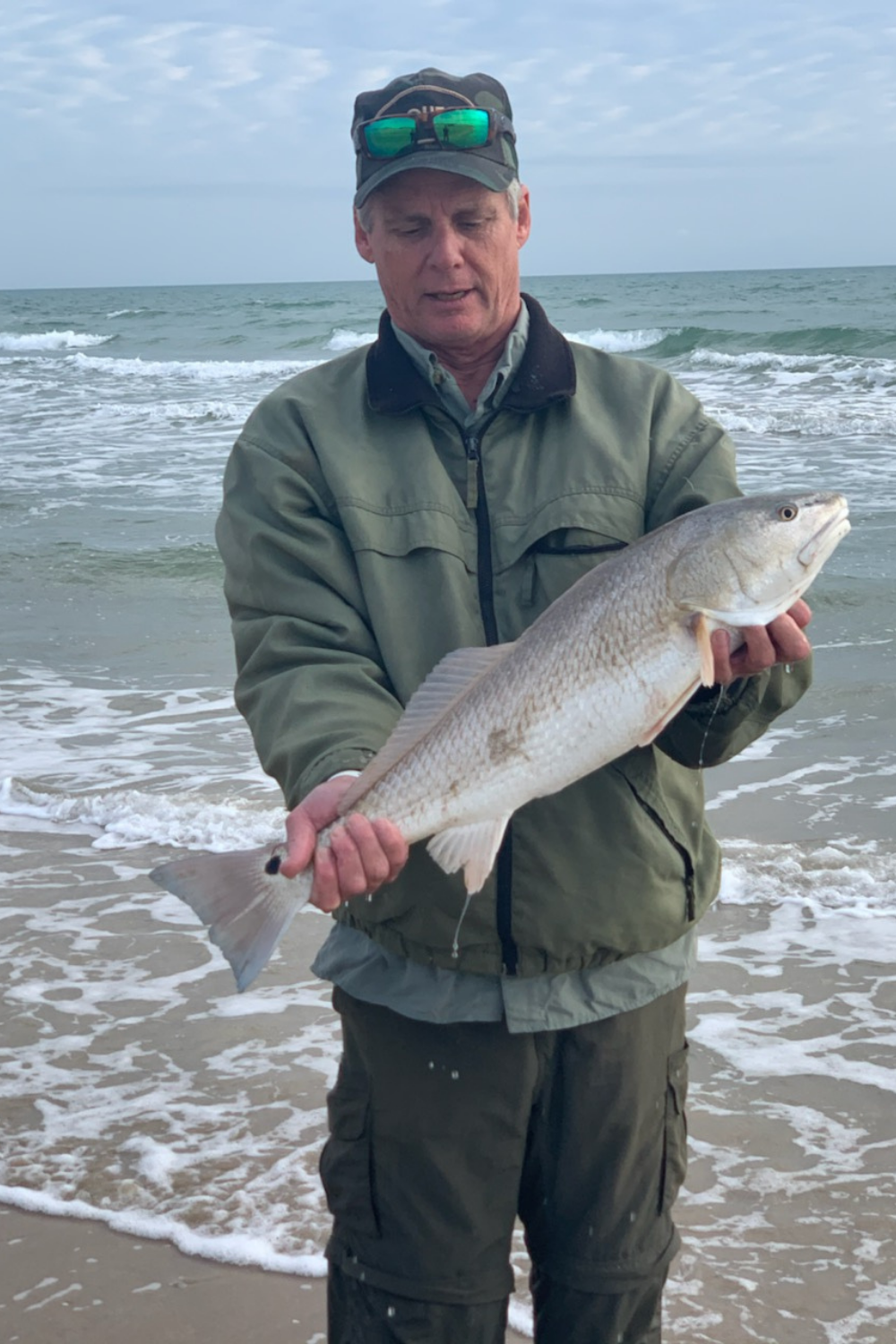
A life long surf fisherman with 50+ years of experience, I am also an avid hunter and outdoorsman. I will be sharing my passion for the outdoors with you so be prepared for hunting, fishing, camping, hiking and more. Along with gear reviews and the latest trends and innovations in the outdoor industry.
